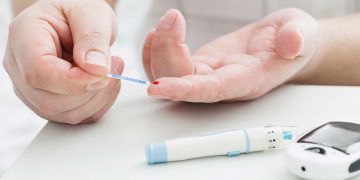Type 1 diabetes symptoms may develop in children over the course of a few days or weeks. If not treated urgently could lead to severe diabetic complications affecting the heart, other internal organs and the limb.
The main symptoms to be aware of are:
Frequent urination
The increased production of urine is the body’s way of correcting the blood glucose level imbalance. There is too much glucose in the blood so the kidneys try to eliminate the excess by causing you to urinate frequently.
Excess thirst
Since the body is losing nutrients and fluids it has to replace it urgently somehow. The main way of correcting this situation is to cause you to feel thirsty – all the time.
Increased appetite
Even though the blood is rich with glucose the cells and muscle tissues are starving. The cells starve because the insulin which is to help the cells utilize glucose is in limited supply or non-existent. Therefore signals are sent to the brains the glucose is needed for energy. This message results in you feeling hungry all the time.
Fatigue / lethargic
The muscles and cells are not getting the glucose it needs and therefore lacks the energy to cause the cells to function normally. As a result of this you always feel tired and short of breath.
If these type 1 diabetes symptoms continue untreated other symptoms will become apparent. These other symptoms of diabetes are:
Unexplained weight loss
This is sometimes a bit surprising. You are eating more, drinking more and yet still losing weight. Don’t be happy just yet as this weight loss it because the body is feeding off itself which leads to more problems.
Blurred vision
The increased levels of glucose in the blood damage the arteries and small blood vessels. Blurred vision is caused by small blood vessels at the back of the eyes burst clouding the fluid in the eye.
Frequent infections
The common complaint of women with untreated symptoms of diabetes is persistent thrush and vaginal itching. It is not uncommon to constantly feel unwell.
Type 1 diabetes symptoms in children can be very dangerous simply because they cannot explain fully what is happening in their body. Therefore it is up to the adult to be able to identify these symptoms of diabetes.
These symptoms occur in adults also but you might have gone to your health care professional and be diagnosed. However in children these symptoms mimic other childhood illnesses and can be missed.
The body will start to produce ketones which are a by-product of the burning of fat to produce energy process. When the body produce excess ketones you are said to be suffering from diabetic ketoacidosis.
The symptoms of diabetic ketoacidosis are:
Vomiting
Stomach pain
Rapid breathing
Severe fatigue (or always wanting to sleep)
When these symptoms are noticeable drastic action needs to be taken. If still not treated these symptoms could lead to diabetic coma or even death.
The type 1 diabetes symptoms occur in people who do not have any family history of diabetes. It is sometime said to be caused by some viral infections. More causes of type 1 diabetes will be discussed on a future page.












